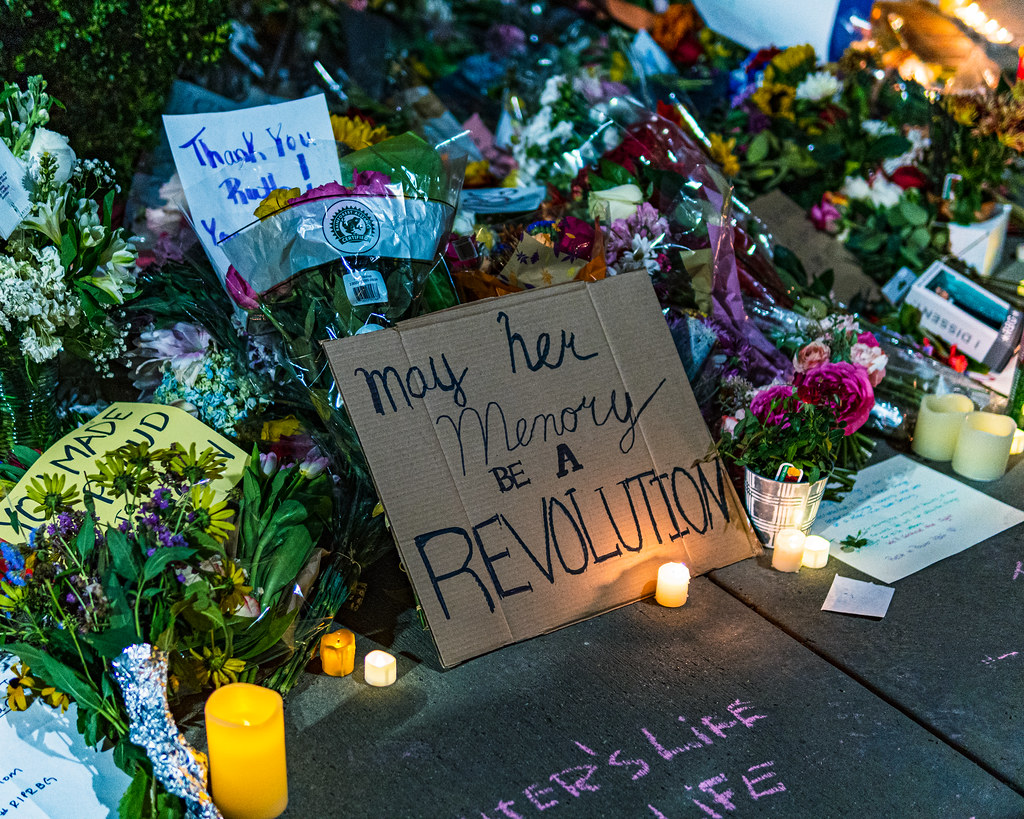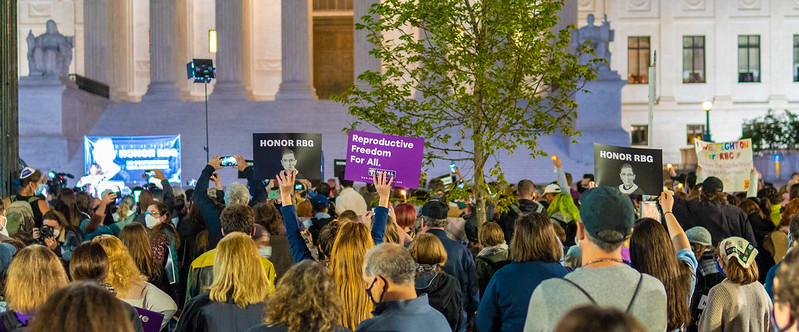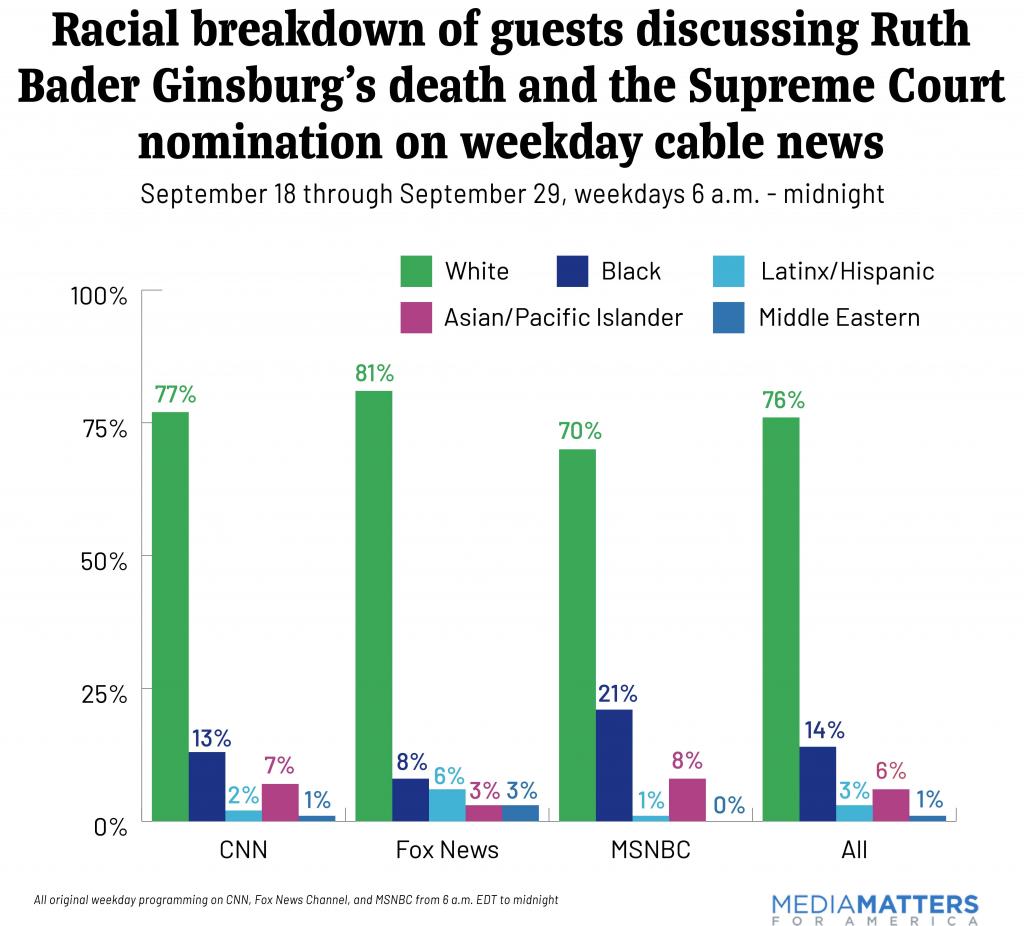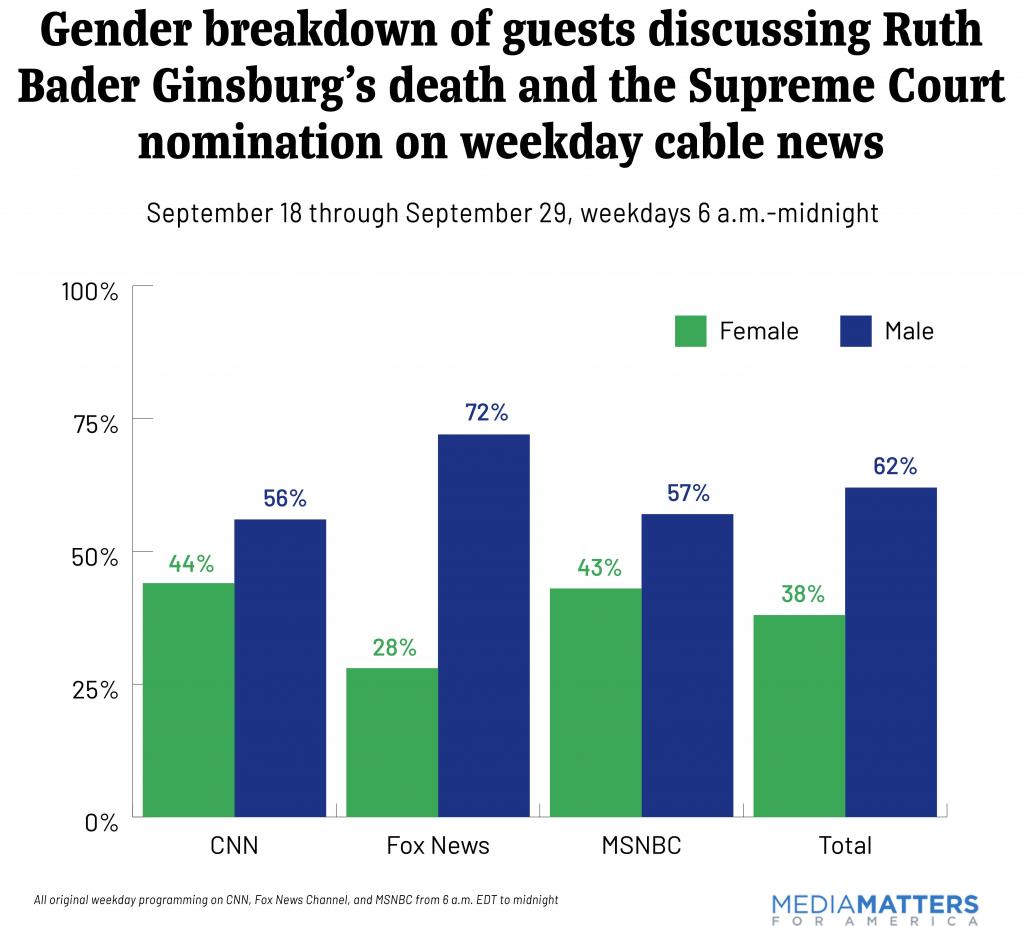To discuss Ginsburg’s death and the Supreme Court nomination, 76 percent of weekday cable news guests were white, and 62 percent were men.
This article was initially posted by Media Matters For America (MMFA), written by Tyler Monroe with research contributions from Harrison Ray. It has been republished with permission.

From September 18, the day Supreme Court Justice Ruth Bader Ginsburg died, through September 29, weekday cable news hosted overwhelmingly white and primarily male guests to discuss her legacy and President Trump’s September 26 nomination of Judge Amy Coney Barrett to the Supreme Court.
Toplines
According to Media Matters’ internal database:
- 76 percent of all guests invited on weekday cable news programming from September 18 through September 29 to discuss Ginsburg’s death and the Supreme Court nomination were white; 81 percent of all guests discussing these topics on Fox News were white.
- 62 percent of all guests discussing these topics on weekday cable news programming during this time frame were male. On Fox News, 72 percent of the guests were male.
- Latinx and Hispanic guests made up just 3 percent of all guests on cable news who were invited to discuss Ginsburg and the Supreme Court nomination; 14 percent of participants were Black.
Minority Groups Will Be Most Affected by Ginsburg’s Replacement

Ginsburg left a strong legacy on civil rights, voting rights and immigrants rights, and she was a trailblazer in the quest for gender equality.
Given the implications of a possible 6-3 conservative majority on the court, cable news should give voice to underrepresented communities and minority groups that will be most affected in discussions about Ginsburg’s legacy and the fight around Barrett’s nomination.

But a majority of guests invited by CNN, MSNBC and Fox News to discuss the Supreme Court nomination and Ginsburg’s death from September 18 through September 29 were white.
According to Media Matters’ internal database, 81 percent of Fox News guests were white—the highest percentage among the three cable channels. CNN guests were 77 percent white, while MSNBC had 70 percent white guests.
Latinx and Hispanic voices were particularly underrepresented, making up around 3 percent of total appearances across all three networks.
Discussions of the Supreme Court nomination and Ginsburg’s death were also heavily dominated by men; 62 percent of all guests were male. Fox News had the highest percentage, with men comprising 72 percent of guests. CNN and MSNBC had better ratios: 56 percent of guests on CNN were male, and 57 percent on MSNBC were male.

You may also like:
Methodology
Media Matters searched our internal database for all guest segments that at least mentioned the death of Ruth Bader Ginsburg, the Supreme Court nomination of Amy Coney Barrett, or the Supreme Court from September 18, when Ginsburg died, through September 29, 2020. The database includes all original cable news programming on CNN, Fox News Channel, and MSNBC from 6 a.m. to midnight, Monday through Friday.
After we reviewed each segment for whether any participant mentioned Ginsburg’s death, Barrett’s nomination, or the Supreme Court, we recorded each segment participant. We counted each participant once per segment in which they appeared.
We coded each segment participant’s gender and race or ethnicity. We based the individual’s gender on their self-identification as either “male” or “female”; no participants in this study publicly identified as nonbinary. We based the individual’s race or ethnicity on their self-identification or on publicly available biographical information, and we used categories as defined by the U.S. Census with the addition of “Middle Eastern” as defined by the U.S. State Department. Not all percentages add up to 100 due to some segment participants identifying with more than one race or ethnicity.
We coded segment participants as “white” if they self-identify as white or are of European descent, as “Black” if they self-identify as African American or Black or are of African descent, as “Latinx/Hispanic” if they self-identify as Latino/Latina or Hispanic or are of Spanish/Latin American descent, as “Asian American/Pacific Islander” if they self-identify as Asian-American or Pacific Islander or are of Asian descent or Pacific Island descent, and as “Middle Eastern” if they self-identify as Middle Eastern or are of Middle Eastern descent.





